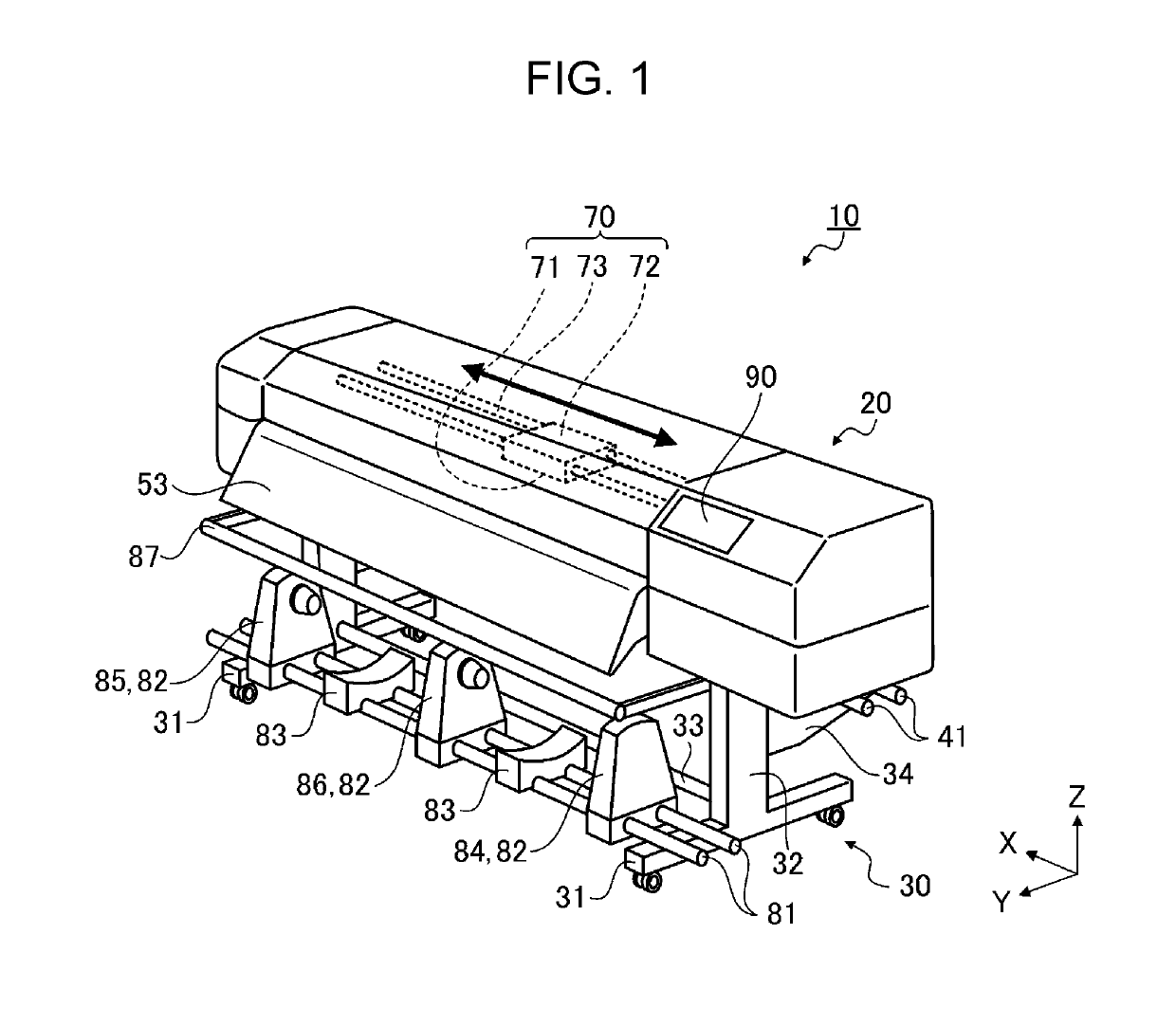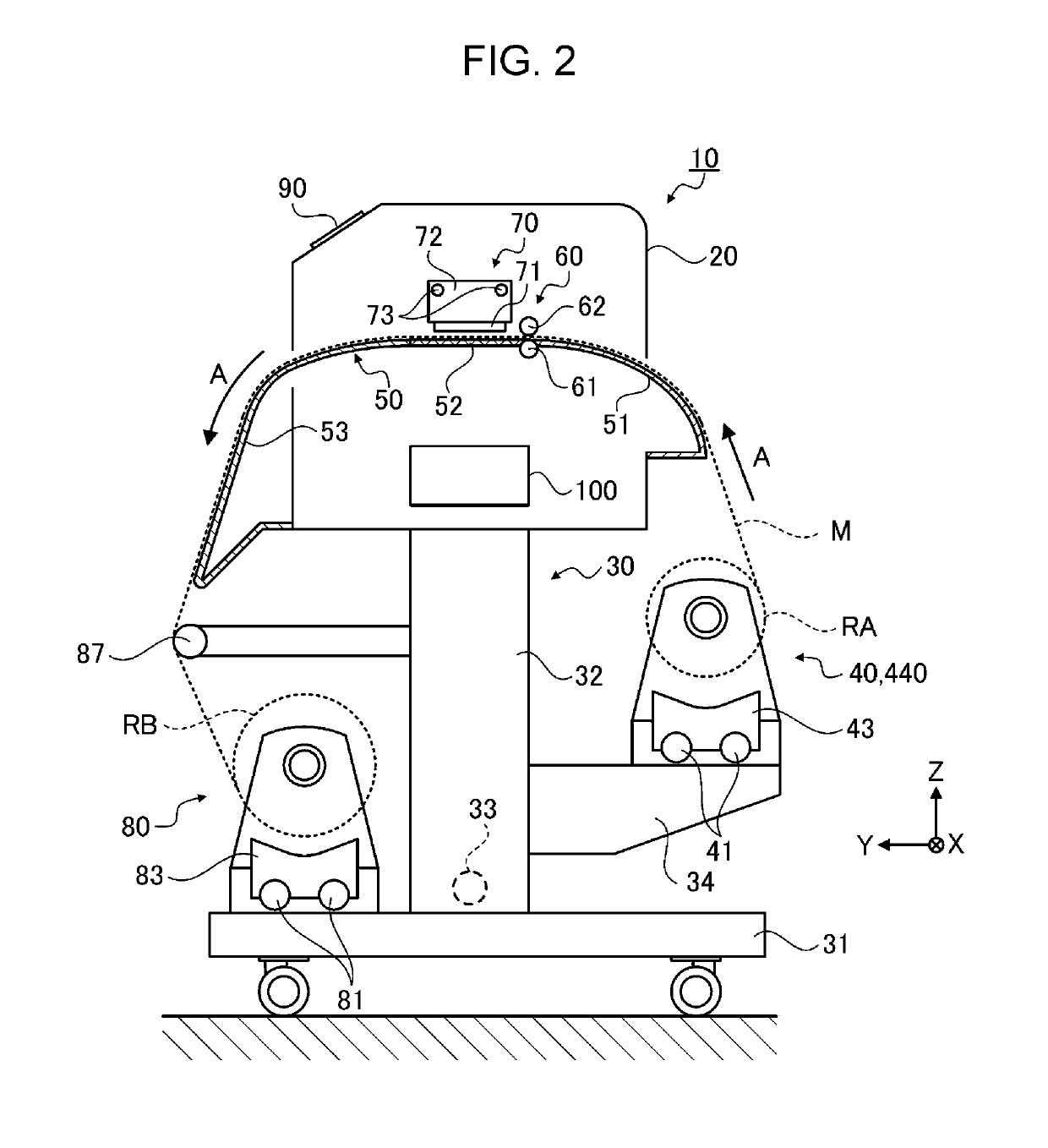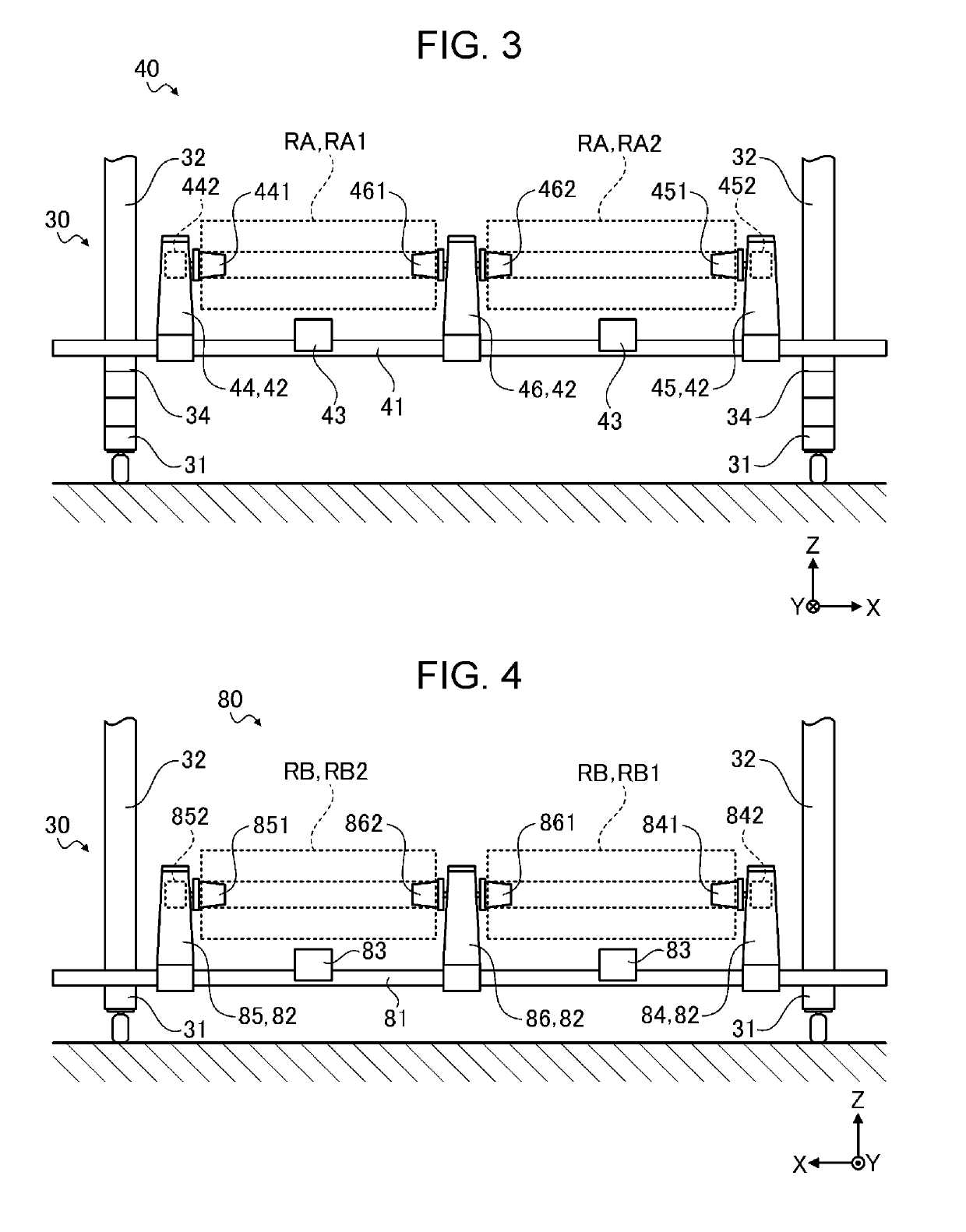Printing Apparatus
a printing apparatus and printing technology, applied in printing, typewriters, thin material handling, etc., can solve the problems of ink jet recording apparatus, difficulty in adjusting the printing speed, so as to suppress the deterioration of transport accuracy and improve printing quality. , the effect of simple mechanism
- Summary
- Abstract
- Description
- Claims
- Application Information
AI Technical Summary
Benefits of technology
Problems solved by technology
Method used
Image
Examples
embodiment 1
[0038]FIG. 1 is a perspective view illustrating an example configuration of a printing apparatus 10, and FIG. 2 is a cross-sectional side view of the printing apparatus 10. The printing apparatus 10 may be an ink jet printer that prints desired images onto a long roll-paper strip M that is supplied as a printing medium in a form of rolled paper (i.e., a roll). The printing apparatus 10 includes a housing 20 that is shaped like a box in one example and a housing support 30 that supports the housing 20.
[0039]As illustrated in FIG. 2, the printing apparatus 10 also includes, in a transport direction A of a roll-paper strip M, a supply section 40 for supplying a roll-paper strip M that is wound into a roll RA, a medium support section 50 for supporting the roll-paper strip M, a transport section 60 for transporting the roll-paper strip M by providing the roll-paper strip M with a transporting force, a printing section 70 for performing printing onto the roll-paper strip M, and a winding...
modification example 1
[0081]In one embodiment, when conducting printing, a user (operator) of the printing apparatus 10 specifies a type of roll-paper strip M via the input section (operation unit 90). The control unit 100 obtains the amount of tensile force from the data table that corresponds to the type of roll-paper strip M specified by the user and applies the obtained tensile force for control. However, the printing apparatus 10 is not limited to such a configuration or a method. For example, the printing apparatus 10 may include a section for recognizing the type of roll-paper strip M, and the tension-imparting section 440 may individually impart a predetermined amount of tensile force according to the recognized type of roll-paper strip M to the corresponding roll-paper strip M.
[0082]FIG. 6 is a cross-sectional side view illustrating an example configuration of a printing apparatus 10. A printing apparatus 10 according to the present modification example includes a medium recognition section 200 ...
modification example 2
[0086]A printing apparatus 10 according to the modification example 2 includes a width detecting section 300 for detecting the widths of installed roll-paper strips M in addition to the printing apparatus 10. The printing apparatus 10 according to the present modification example is suitable when a limited number of texture types of the roll-paper strips M is used. In other words, the width detecting section is useful at least when the roll-paper strip M is mostly replaced with a different width type while the texture type of the roll-paper strip M is not changed often.
[0087]The width detecting section 300 includes a light-emitting / receiving device 301 that emits light to the roll-paper strips M transported on the transport path and receives reflected light of the light that has been emitted. The width detecting section 300 also includes a detection processing portion 302 that processes results (photodetection signal) from the reflected light that is received. The light-emitting / rec...
PUM
 Login to View More
Login to View More Abstract
Description
Claims
Application Information
 Login to View More
Login to View More - R&D
- Intellectual Property
- Life Sciences
- Materials
- Tech Scout
- Unparalleled Data Quality
- Higher Quality Content
- 60% Fewer Hallucinations
Browse by: Latest US Patents, China's latest patents, Technical Efficacy Thesaurus, Application Domain, Technology Topic, Popular Technical Reports.
© 2025 PatSnap. All rights reserved.Legal|Privacy policy|Modern Slavery Act Transparency Statement|Sitemap|About US| Contact US: help@patsnap.com



